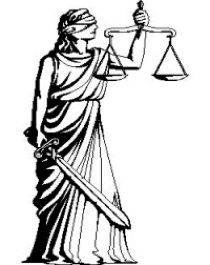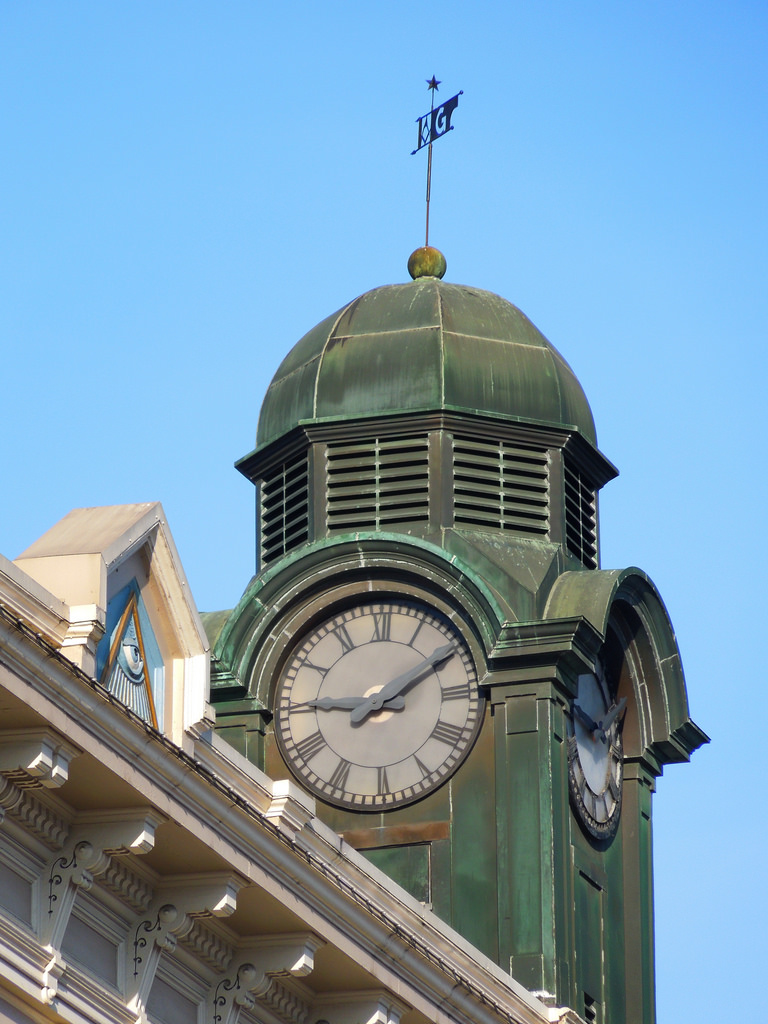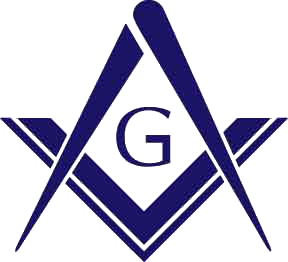Published in “The Ashlar,” September 1998
Are the principles on which Freemasonry is founded still relevant today and more importantly are they relevant to the future? First let us establish what Freemasonry is and what better way than to take the accepted definition of ‘a system of morality, veiled in allegory and illustrated by symbols’. It is a movement whose members are joined together in an association based on brotherly love, relief and truth. These are the principal tenets of Freemasonry. Derived from these tenets are the virtues of faith, hope and charity – all supported on the three great pillars of wisdom, strength and beauty.
There are many other principles and virtues, but it would be of no advantage to examine them at this time as they are derived from the four sets of three. Every Mason is familiar with these words but, unfortunately, familiarity often means that the definitions are forgotten. These words were probably penned in the early eighteenth century and more than likely taken from much earlier sources. Since then, time has moved on and as English is a dynamic living language, new words are added as knowledge increases while older and redundant words are dropped and again other words change meaning, some radically and some by degrees.
Have the words used in the description of Freemasonry altered in meaning? Are they still relevant today or, more importantly, for tomorrow? Have the concepts behind them changed? To answer these questions it is necessary to examine the meanings of these words. Consider the first set of three words in the definition, which are ‘morality, veiled in allegory and illustrated by symbols’. With regard to morality, it can be seen that all societies have a view of what is the correct way of life for both individuals and society, thus distinguishing between right and wrong. The first moral laws were evolved for the protection of the community. In the course of evolution they became systematic and codified on the basis of custom, for example the Ten Commandments. The object of the code was to secure coherence in the group so that the members would act effectively.
 Morality needs the strong arm of the law, say in the form of the police and judiciary, to make itself effective and the codes were enforced with relentless severity, bolstered by taboos and religious sanctions. External authority also strengthens the non-legal virtues such as chastity, truthfulness, kindness, benevolence and so on. Morality continues to evolve and each generation must solve its moral problems in its own way. The circumstances of the modern world have brought new moral dilemmas in such areas as euthanasia, abortion, birth control, medicine, human rights, the role of women, divorce and so on. With regard to individuals, there is admitted to be such a power in the mind as conscience which warns the person when they are doing wrong and to a certain extent, a force to make the person do right. Conscience grows and needs to be trained and nurtured by precept, example and experience and often reinforced by religious sanctions, the force of public opinion, social approbation and reprobation, and with systematic punishment before it can be really effective in controlling conduct. For example, a child is trained in the concept of right and wrong by, amongst other things, punishment, encouragement, rewards, example, criticism and guidance.
Morality needs the strong arm of the law, say in the form of the police and judiciary, to make itself effective and the codes were enforced with relentless severity, bolstered by taboos and religious sanctions. External authority also strengthens the non-legal virtues such as chastity, truthfulness, kindness, benevolence and so on. Morality continues to evolve and each generation must solve its moral problems in its own way. The circumstances of the modern world have brought new moral dilemmas in such areas as euthanasia, abortion, birth control, medicine, human rights, the role of women, divorce and so on. With regard to individuals, there is admitted to be such a power in the mind as conscience which warns the person when they are doing wrong and to a certain extent, a force to make the person do right. Conscience grows and needs to be trained and nurtured by precept, example and experience and often reinforced by religious sanctions, the force of public opinion, social approbation and reprobation, and with systematic punishment before it can be really effective in controlling conduct. For example, a child is trained in the concept of right and wrong by, amongst other things, punishment, encouragement, rewards, example, criticism and guidance.
There are variations in conscience among nations and amongst individuals in each nation. In the West, emphasis appears to be shifting away from social morals to individual morals resulting in a ‘pick-and-mix’ morality. The morality of Freemasonry requires Masons to deal justly with others, not to defraud, cheat or wrong them of their just dues and rights. A Mason is therefore particularly bound never to act against the dictates of his conscience.
The teaching of morals by allegory is a time-honoured technique still relevant, though members new to the Craft may not be familiar with it. Allegory is a story that can be read on two levels, firstly as a surface narrative and secondly at a deeper level which is moralistic. It is the embodiment of a train of thought in a visible form by means of images and thus involves a transfer of meaning with a number of correspondences with the real world. For example, the whole of the third degree is allegorical for behind the story of the central character lies the foundation of the philosophy of Freemasonry.
The signs used in Freemasonry are derived from the allegory and are used as a method of recognition. The signs and the symbolic instructions are the only secrets of Freemasonry.
The symbols used derive from the distant past when the wisdom of the ancient peoples was largely symbolic. It was in the early seventeenth century that speculative Masons adopted symbolism. The symbol is an image which hides an inner meaning. The meaning is usually hidden behind a form which most people think they can understand immediately. The Masonic Lodge itself is a symbol and the interior abounds with them. For example, the three lesser lights. Light in Masonry has a symbolic meaning. Light is opposed to darkness and suggests many opposites such as right and wrong amongst many others. Symbols illustrate the principal tenets of Freemasonry. These are relief, truth and brotherly love – the second group of four.
By ‘tenet’ is meant some teaching that is so obviously true that it is accepted and believed without question, for example, thou shalt not steal, not commit adultery, not bear false witness and so on. In terms of logic they are axiomatic, that is to be relied on utterly for use as the basic data from which conclusions are to be derived. Thus they are ‘self evident’ which means that no other evidence can make them more evident or less evident than they already are. The certainty of the tenets lies in their being confirmed by experience and the impact of the tenets on the lives of those who receive them. Tenets are part of the system of morality and not of the allegory that veils it or the symbols that illustrate it. They are a fundamental part of Freemasonry which cannot be altered without destroying the identity of Freemasonry itself. This is confirmed each year at the installation of office-bearers when the principles of Grand Lodge are read out and puts a check on innovation.
Love in itself is a concept that has been and continues to be one of the most potent forces within the traditions of humankind. Love has been described as the most powerful force in the universe binding all living things together. Love is a multi-dimensional phenomenon but can be categorised under three headings. Firstly, there is erotic or sensual love. Secondly, there is a divine love bestowed upon the recipient though grace. Thirdly, there is brotherly or friendly love. This is offered in affection to another human being without thought of personal gain. It means that we place on another person the highest possible value as a friend, a companion, an associate, a neighbour.
There is an old Arab saying which states that ‘man’s love for a woman waxes and wanes like the moon but man’s love for his brothers shines eternal like stars in the heaven’. Brotherly love is an essential element which binds the Brethren to each other, as they have pledged themselves to exercise it and it is one of the greatest duties of a Freemason. On this principle, Masonry unites people of every country, sect and opinion and conciliates true friendship. Brotherly love also manifests itself in the second tenet of relief, which is one of the forms of charity. Masonic relief takes for granted that any man may be in temporary need of a helping hand. It can take many forms, such as alleviating misfortune, soothing calamity, helping to restore peace to a troubled mind, and so on. This is one of the natural and inevitable acts of Brotherhood.
The third of the principal tenets is truth, which is a vital requirement if Brotherhood is to endure. Truth takes different forms, such as conformity of a concept to a fact or reality and not being false or erroneous. It is also the knowledge of the underlying reality of things. This form of truth is often linked with the concept of goodness and is regarded as eternal, absolute and immutable. To be good and true is the first lesson taught in Freemasonry. On this theme, Masons should endeavour to regulate their conduct in order to eliminate hypocrisy and deceit. In Freemasonry, truth is accepted as the foundation of every virtue. The three principal virtues are faith, hope and charity – the third group of four.
Faith has variously been defined as belief, trust, devotion and dependence. It is a universal feature of humankind’s response to the presence of the divine in the midst of life. In the words of St. Paul ‘faith is the assurance of things hoped for, the conviction of things not seen’. Faith is the bond of friendship and a support of society.
Hope is an orientation towards some future event which will radically transform the present order. What is hoped for depends on the specific understanding of reality as displayed by a particular faith, by an individual or by society. Hope is a ground for expectation, trust or confidence. Hope can lead to dissatisfaction with the present order of things and becomes the basis of a liberating or transforming practice.
Charity, or brotherly kindness, is said to be the chief of all the social virtues and ought to be the distinguishing characteristic of every Freemason. Charity is devoted to the promotion of the welfare and happiness of humankind and not for the benefit of the individual. If charity is misapplied it ceases to be a virtue and becomes a folly.
Freemasonry is said to be supported by three great pillars called wisdom, strength and beauty, which have allegorical meanings. This is the last of the set of four.
In pursuing knowledge, the aspirant will find that knowledge, in itself, is insufficient but if coupled with understanding it will produce wisdom. In turn, wisdom gives an inner strength and these two combined will engender beauty, not the beauty of adornment, but the inner beauty of insight. The fact that knowledge expands through time should be a stimulus to those who pursue it and should give them greater wisdom.
Before becoming a Freemason, the candidate must affirm that he believes in a Supreme Being. The Supreme Being takes many forms in the various religions. Within our Volume of the Sacred Law we can see the Deity being transformed from a vengeful personal God of the Old Testament to a universal one of love in the New Testament. The proponents of a spiritual movement known as ‘Process Theology’ argue that god evolves along with men and is no longer thought of as an external, unchanging God.
Believers, who are examining their ideas of faith, religion and spirituality on the Internet, which links computers to virtually any source of stored information, are rapidly accepting this view. Ideas can resonate and faith is being shaped by a collective spirit which will bind Christian and Jew, Muslim and Buddhist together. The founding fathers of speculative Masonry had thoughts on similar lines for it is seen in Lodges that there are various Volumes of the Sacred Law as, for example, the Bible for Christians, the Koran for Muhammadans, the Bhagauat Geeta for Hindus and the Torah for the Jews.
The concept of morality in the sense of right and wrong remains constant. It is with us today and by the allegory present in Freemasonry, can assist us in living a moral life in our changing society. The tenets of Freemasonry are self evident and still relevant today but only if kept alive by every member of the Craft living up to them. It is imperative that Freemasons cease paying lip service to the principles, translate them into action, and live by them.
Having questioned the relevancy of the principles of Freemasonry in today’s world and for the future, I hope that you will agree that not only are they relevant, but are the essential rock on which to anchor our faith, belief and conduct in society’s changing maelstrom.



